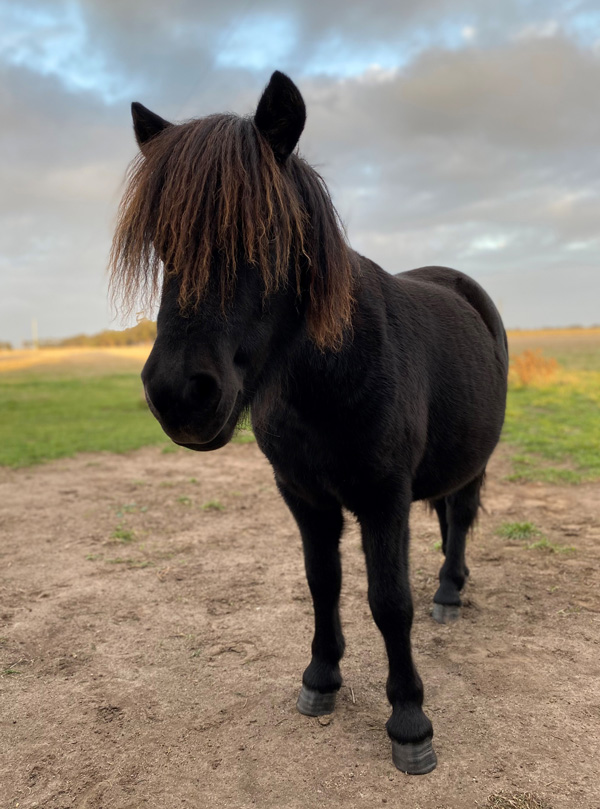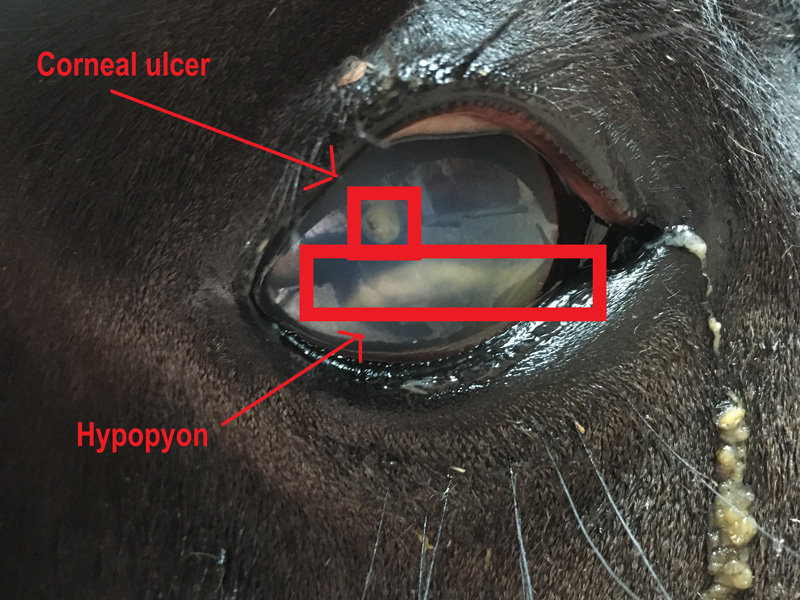Who: Raffy – 5year old Shetland Pony
What: Painful eye – corneal ulceration and hypopyon
Raffy was seen for a sore eye of 5 days duration. Initially, the owner noticed Raffy had a cloudy right eye which was light sensitive. She initiated treatment with an old eye ointment she had left over from a previously sore eye. After no improvement, she called the SWE vets to come and have a look.
On initial examination, Raffy was sedated and two nerve blocks (supraorbital and auriculopalpebral) were performed to desensitize the eye and remove the ability of Raffy to squeeze his eye closed. It was apparent immediately that Raffy did not just have a simple corneal ulcer. In the anterior chamber of the eye, pus was evident, this is called hypopyon. This occurs when bacteria enters through the damaged corneal surface and an influx of inflammatory cells become trapped within the anterior (front) chamber of the eye.
In addition, fluoresceine stain was applied to the surface of the eye and a corneal ulcer was identified. To understand how fluoresceine works, it must be noted that the cornea has multiple layers and some of these layers repel water (hydrophobic) and some of them bind to water (hydrophilic). The outermost layer of the cornea is hydrophobic – which is why your eyes are moist and teary. The second layer of the cornea, however, is hydrophilic. Fluoresceine is able to bind to the hydrophilic layer of the cornea. Applying this stain allows vets to identify if the cornea is damaged and if so, how extensively.

Finally, Raffy was also diagnosed with uveitis. Put simply, this is inflammation of the uvea, the vascular and pigmented structures of the eye. The clinical signs of this are typical of a painful eye – cloudiness, sensitivity to light, ocular discharge, and a constricted pupil.
To treat Raffy, we took a multimodal approach. Raffy had two types of antibiotic ointments to go into his eye, in addition to topical atropine to help resolve the uveitis. In addition, Raffy was started on oral pain relief and doxycycline, an antibiotic that is released in tear film. After a few weeks of 4 times/day treatment with eye drops, and twice daily oral medications, Raffy’s eye was fixed!
Luckily, Raffy tolerated treatment well. If he didn’t however, our vets would have considered placing a sub palpebral lavage (SPL). This tubing runs from underneath the eyelid, up between the ears and down the mane. This allows treatment to be administered into the treatment tube and removes the fight to pry the eye open. An SPL is a great option of difficult to manage patients but requires stabling and very observant and proactive owners as complications can occur.
Moral of the story, don’t wait to get your horse’s eye examined by a vet if there is an injury or signs of pain. Early intervention is always best, and a speedy resolution is often achievable if the correct treatment is initiated early.

